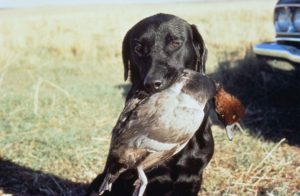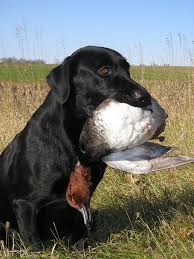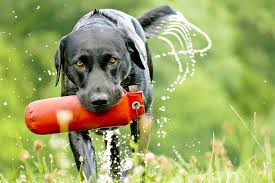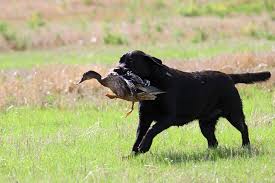The Importance Of Teaching Kids About Dogs
Why it’s Important to Educate Children About Canines

For the majority of people, ownership of a pet is something that takes awhile to happen. However, it does come at some point. This is particularly true when the person is part of a young family.
Most people remember growing up with a pet dog or cat to keep them company, but owning a dog requires more than merely letting the animal into your home. For a dog to be fully integrated, it is important that all people are taught how to interact with the canine. This article will provide information on the importance of teaching kids about dogs.
- Approaching The Dog
Regardless of whether your child is approaching a dog in the park or a new pet in your home, they need to know how to approach them correctly. When a child approaches a dog, irrespective of their age, they need to have the permission of the dog’s owner and a supervising adult.
We teach children about ‘stranger danger’, so why does this not extend to unknown animals? When teaching your child about approaching dogs, be sure that they know the rules and do not go out on their own.
- Learning About The Dog
As a parent or guardian, you are responsible for choosing which dogs the child can interact with. To find the ideal dog, it is important that you choose a canine with the correct temperament. As is known, all breeds present with different characteristics; for example, a French Bulldog can be needy while a Jack Russell is hyperactive. Consider the child’s temperament and what they would be most comfortable with, and then choose the dog suitable to their needs. This will make it easier for them to learn about each other and bond.
- Handling Stray Dogs
A stray dog may be a homeless animal or a dog that has broken free of his or her leash. Regardless of the case, most children will be curious about the dog and will often run after them. To avoid this problem, it is important that you teach your child about the danger of strays and how best to handle any animal without adult supervision. Teach them that seeking an adult’s help is the best way to help a dog who is lost. We all wish to do our part to help stray dogs, but the safety of a child is vital.
- Considering The Dog’s Body Language
Unfortunately, dogs cannot speak to us, and this is why they use body language to communicate their needs. Teaching a child about a dog’s body language is the best way to improve their relationship with the animal. By teaching the child to remain still, the dog will learn how to “speak” and communicate his or her needs. Do not allow the child to back the dog into a corner or chase it as this will only frighten the animal.
- Learning How To Behave Around Dogs
It is essential that children be reminded of a dog’s heightened sense of hearing and that they need to speak softly. Squeals of joy may be happy for us, but it could indicate threats or anxiety for a dog. Using an ‘inside voice’ with soothing tones is the best way to help a dog feel at ease and keep the child calm. If the dog bares his teeth or flattens his ears, this could be a sign of unhappiness, and at this point, you should end any child-dog interaction immediately.
Final Words
As can be seen, there is a great deal of information to share with a child before getting a dog. Using the information, will be able to prepare your child for a good lifelong bond with a pet canine.

his blog has been brought to us by our friends at Train Your Canine . If you would like to learn more, please visit them at https://www.trainyourcanine.net/
 If you go bird hunting, you need to train your dog to retrieve the bird correctly. However, many bird dog owners do not teach their dogs accurately, and this can lead to significant problems. There are crucial elements to the training of a bird dog that you need to know about to ensure your dog is safe and that it retrieves your birds correctly.
If you go bird hunting, you need to train your dog to retrieve the bird correctly. However, many bird dog owners do not teach their dogs accurately, and this can lead to significant problems. There are crucial elements to the training of a bird dog that you need to know about to ensure your dog is safe and that it retrieves your birds correctly. Labradors are one of the best kinds for bird hunting because they are genetically predisposed to have a soft mouth and offer good delivery to hand. This is why you need to think about the breed of your dog before you start training them.
Labradors are one of the best kinds for bird hunting because they are genetically predisposed to have a soft mouth and offer good delivery to hand. This is why you need to think about the breed of your dog before you start training them. Many hunters prefer to be accompanied by dogs, especially when they are hunting game that is far away and difficult to retrieve.
Many hunters prefer to be accompanied by dogs, especially when they are hunting game that is far away and difficult to retrieve.  ‘heel,’ ‘stay’ and other things like knowing the behavior that is acceptable and that which is not. Reward good behavior and admonish the bad. Your dog also needs to be utterly loyal to you and must be able to follow your commands happily and without feeling cowed down or fearing punishment. You also need to familiarize your dog with nature and the surroundings that will be encountered during your hunting trips. Take him for long walks in the outdoors and the terrain that you will generally be in when hunting. Let the dog also be familiar with firearms and the sounds of a gun, as this can at times scare them. This familiarizing requires a lot of patience and a routine of outings that will make the dog used to the outdoors and natural surroundings, besides the hunting.
‘heel,’ ‘stay’ and other things like knowing the behavior that is acceptable and that which is not. Reward good behavior and admonish the bad. Your dog also needs to be utterly loyal to you and must be able to follow your commands happily and without feeling cowed down or fearing punishment. You also need to familiarize your dog with nature and the surroundings that will be encountered during your hunting trips. Take him for long walks in the outdoors and the terrain that you will generally be in when hunting. Let the dog also be familiar with firearms and the sounds of a gun, as this can at times scare them. This familiarizing requires a lot of patience and a routine of outings that will make the dog used to the outdoors and natural surroundings, besides the hunting.